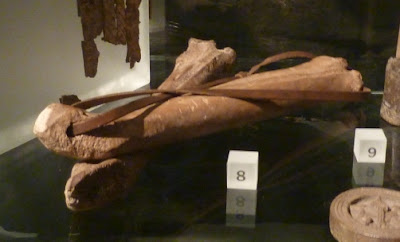A short biography today of one of King Henry II's servants.
Ailnoth Ingeniator (the engineer) worked for Henry II from at least 1157, possibily earlier, until Henry's death in 1189 and seems to have retired around that time.
His'job title' and main area of work was as 'Keeper of the Palace of Westminster' for which he drew a salary of 7pence a day - working out to 10 pounds, 12 shillings and 11 pence a year.
Ailnoth Ingeniator (the engineer) worked for Henry II from at least 1157, possibily earlier, until Henry's death in 1189 and seems to have retired around that time.
His'job title' and main area of work was as 'Keeper of the Palace of Westminster' for which he drew a salary of 7pence a day - working out to 10 pounds, 12 shillings and 11 pence a year.
At Westminster his duties included repairs to the fabric of the buildings that composed the royal palace. He was also responsible for overseeing their cleaning and furbishing. If they required fresh rushes for the floor or needed a broken window repairing, then Ailnoth saw that it was done. (there is written proof for the broken window repair, and is early evidence for domestic glazing in royal houses).
On his watch, a cloister was built to link the king's various chambers to provide shelter in bad weather. A new wharf and landing stair was planned and constructed too. At Westminster abbey the refectory was repairned in 1175 and it is very possible that Ailnoth designed the Chapel of St. Catherine in 1160.
Outside of London he worked on Windsor, Woodstock and Rayleigh. He had a hand in building and designing Orford Castle in East Anglia between 1165 and 1173. In 1175-76 he led a team of royal carpenters and masons who razed the rebellious Hugh Bigod's castle of Framlingham to the ground, leaving only the stone great hall.
Following his busy career, Ailnoth retired from service around 1190 and had died by 1197 when his wife, Maud, is mentioned as a widow. His son Roger continued in his father's trade and was active at Westminster from 1177-1216.
Ailnoth Ingeniator: One of the ordinary people literally holding together the fabric of Angevin England.
Today's research photo is of a Norman fireplace at the Tower of London, which Ailnoth would have known, and where Henry II and Alienor of Aquitaine among others would have warmed themselves on occasion. I love the modern placement of a fire extinguisher! Click to enlarge.


















